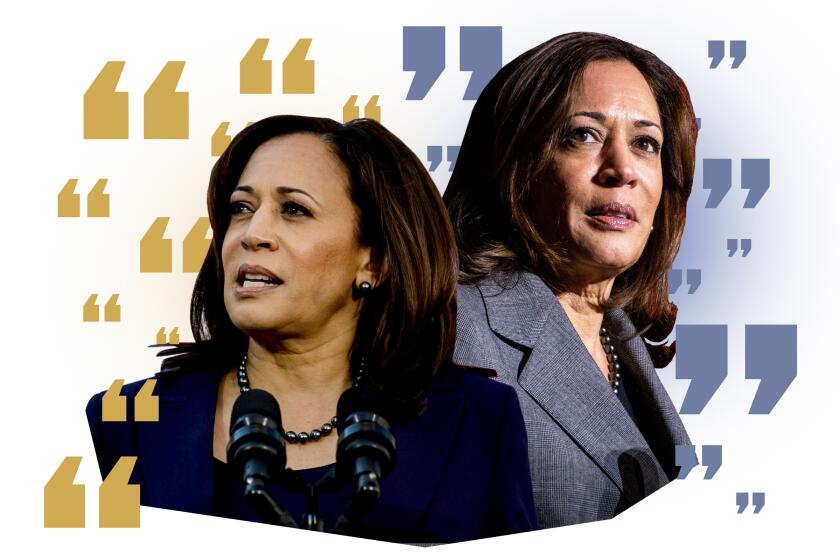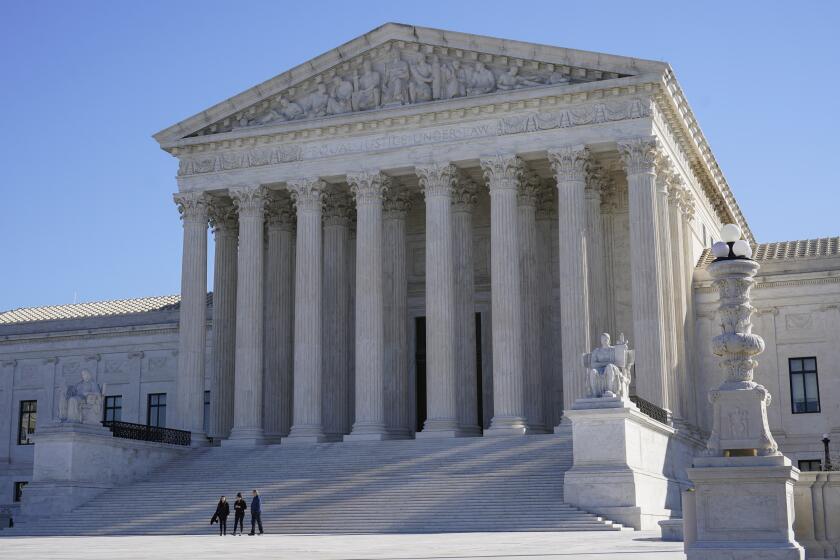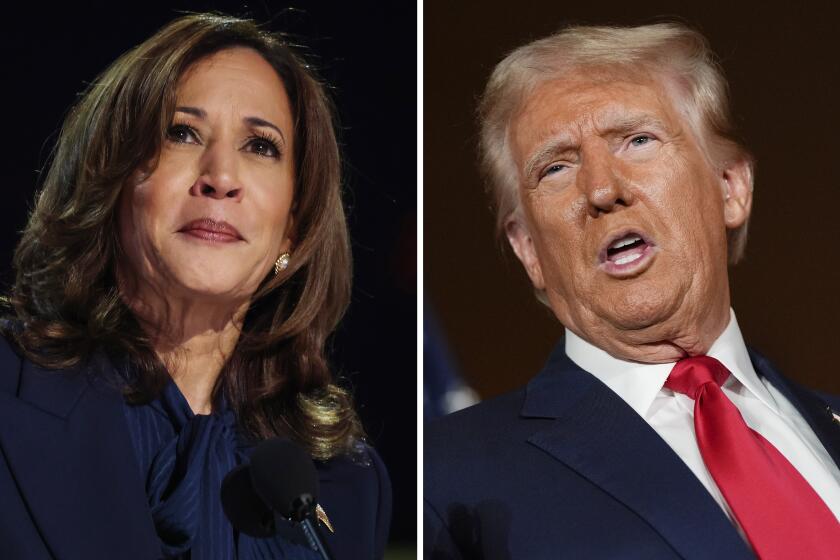
- Trump says many untrue or contradictory things, but some definite policy shifts can be documented.
- When Trump was president, his advisors often jockeyed to be the last to discuss an issue with him because he would often take that view as his own.
- Trump once declared TikTok a threat to national security. “We love TikTok,” he says now.
WASHINGTON — President Trump has a record of saying outrageous, contradictory and untrue things. Fact-checkers have found thousands of falsehoods he has asserted about many issues, including the state of the economy, the threats posed by immigrants and his achievements as president.
For example, he falsely claimed in his Sept. 10 debate with Vice President Kamala Harris that he had “saved” the Affordable Care Act when he was president, even though he spent most of his term in office trying to repeal the program, widely known as Obamacare. He continues to falsely claim the 2020 election was stolen. He regularly makes remarks that are provably untrue, such as when he said during a Sept. 30 visit to survey hurricane damage in Georgia that President Biden was not taking Republican Gov. Brian Kemp’s calls. (Kemp and Biden both confirmed they had spoken.)
It can be difficult to separate Trump’s false statements on any particular issue from a change in policy positions over time.
After Joe Biden selected Kamala Harris as his running mate in 2020, she moved toward the center on some issues, and has generally kept those positions to this day.
On some issues, including his opposition to trade deals and immigration, he has been consistent for decades.
But on others, like abortion, he has changed his stance, often more than once. When he was president, his advisors often jockeyed to be the last one to discuss an issue with him because he tended to adopt the view he’d heard most recently.
Here is a look at some of his clearer, more consequential policy shifts:
Abortion
What he said then:
What he says now:
The issue: Roe vs. Wade, the Supreme Court’s 1973 decision protecting abortion rights, was overturned in 2022. Trump, who had vowed to scuttle Roe, appointed three of the five conservative justices behind the majority opinion.
Forty-one states now have at least some form of abortion restriction, including 14 that ban the procedure completely, eight that ban it at or before 18 weeks of pregnancy, and 19 that ban it at some point after 18 weeks, according to the Guttmacher Institute, a research organization that supports abortion rights.
The change: Trump has vacillated on abortion for decades, declaring himself “very pro-choice” as recently as 1999.
As he courted evangelical voters in his 2016 presidential campaign, he went so far as to say during in an interview that women who get the procedure should be punished.
On Jan. 24, 2020, he became the first president in history to attend Washington’s annual March for Life rally, declaring that “unborn children have never had a stronger defender in the White House.”
Here is where Vice President Kamala Harris and former President Trump stand on a federal ban, the Supreme Court and other issues related to abortion.
But since Roe was overturned, he has struggled to define his position, insisting falsely that even Americans who support abortion rights want to leave the issue to the states. In late August, he suggested he may vote for an abortion rights measure in his home state of Florida, only to say a day later, under pressure from abortion rights opponents, that he would oppose it. Even in opposing it, he has called Florida’s banning of the procedure after six weeks too restrictive.
He posted on social media on Aug. 23 that his administration “will be great for women and their reproductive rights.”
Political implications: Evangelical Christians who count abortion as their top issue have been crucial to Trump’s political career, helping him secure the presidency in 2016 after he promised to appoint conservative justices who would overturn the right to abortion.
Yet abortion proved a key factor in Democrats’ ability to exceed expectations in the 2022 midterm election. Harris generally leads Trump among female voters. And on the issue of abortion, she held a 21-point lead among male and female voters combined in an NBC News poll released Sept 22.
Social Security
What he said then:
What he says now:
The issue: The trust fund that pays Social Security benefits to retirees is projected to be depleted by 2033, according to the Congressional Budget Office.
Policymakers have debated a number of fixes, including raising the full retirement age above 67 for future recipients. Some conservatives have pushed to privatize the program and create personal savings accounts in their place.
The change: In a book he co-wrote in 2000, “The America We Deserve,” Trump called Social Security a “Ponzi scheme,” and suggested raising the age for full retirement to 70 and privatizing the system. He also said in a 2020 interview that he would be open to cutting Social Security and Medicare “at some point.”
But since running for president in 2016, he has generally spoken against such cuts — a position he has reiterated often as he campaigns this year, including at an Aug. 30 rally in Pennsylvania. “I will fight for and protect your Social Security and Medicare with no cuts whatsoever,” he said.
Voting in California’s general election continues through election day, Nov. 5. Read up on the races in L.A. city and L.A. County, the California statewide ballot propositions and other measures.
Political implications: Social Security is so popular among voters that it’s most often compared to the third rail of a subway track — the one that gets you electrocuted if you touch it. Some fiscally conservative Republicans have flirted with touching it over the years. But Trump’s insistence on leaving it alone is one of the main ways in which he has redefined the Republican Party and won over more working-class white voters and retirees.
Tax deduction that affects California
What he did then:
What he says now:
The issue: Trump’s 2017 tax law — which cut corporate and individual taxes — capped federal deductions for local and state taxes at $10,000. Those deductions primarily benefited high earners in high-tax states such as New York, New Jersey, Massachusetts and California.
The cap and other parts of the law will expire next year unless Congress extends them. Removing the cap or letting it expire would cost the federal government $1.2 trillion over a decade, according to an estimate from the Committee for a Responsible Federal Budget.
The change: Trump has promoted the benefits of his 2017 tax law, but agreed to cap deductions in part to deflect criticism that he was breaking his promise to tame the budget deficit.
But he declared in a social media post on Sept. 17 that he would “get SALT back.”
Vice President Kamala Harris and former President Trump have clearly divergent tax proposals, though both candidates’ plans are short on detail.
Political implications: Most of the people affected by the cap live in solidly Democratic states. But it’s a big issue for many of Trump’s donors. His social media promise came days after he met with donors in Beverly Hills and the Bay Area and just ahead of a rally in New York.
The promise is one of many Trump has made to cut taxes. He has also said he would drop taxes on tips for service industry workers as well as on overtime and Social Security benefits. Analysts say that all of the ideas would balloon the annual federal budget deficit, defying his 2016 promise to eliminate the national debt in eight years.
TikTok
What he said then:
What he says now:
The issue: Biden signed a bill in April that could ban TikTok if the Chinese company that owns it, ByteDance, does not sell it by early next year.
Given the close relationship between Chinese companies and their government, American security officials and lawmakers worry that the app could give China data on its users and be used as a tool for information warfare.
The change: Trump, who had been a critic of TikTok, issued an executive order on Aug. 6, 2020, that could have led to a ban, justifying “aggressive action against the owners of TikTok to protect our national security.”
He abruptly changed his view this March after meeting in Florida with billionaire Republican megadonor Jeff Yass, whose trading company owns a 15% stake in ByteDance. Trump has said they did not discuss TikTok. Former Trump senior advisor Kellyanne Conway also lobbied against the TikTok ban on behalf of the conservative Club for Growth, which counts Yass as one of its biggest donors.
“We love TikTok. I’m going to save TikTok,” Trump told reporters while campaigning in Philadelphia in June.
Political implications: Support among Americans for a TikTok ban has fallen, and in July and August stood at 32% compared with the 28% who opposed a ban, according to a Pew survey. Other surveys show higher opposition to a ban among voters under 30, a group that Harris is trying to recapture after a decline in their support for Biden.
Trump has also been making inroads with some of the tech industry’s biggest donors, including Elon Musk. That has coincided with Trump switching positions on a number of pet issues, including cryptocurrency, which he once called “a scam.” In August, he began promoting a new cryptocurrency business venture with his sons, prompting concerns about possible conflicts of interest.
COVID-19 vaccines
What he said then:
What he says now:
The issue: As president, Trump struggled to contain the COVID-19 pandemic, which killed an estimated 350,000 Americans in 2020, and more than 1.2 million Americans overall. But his Operation Warp Speed developed vaccines in record time as his term was ending.
Those vaccines are credited with containing the virus. But many Americans, especially on the right, were hesitant to take them.
The change: Trump promoted Operation Warp Speed throughout the 2020 presidential campaign, promising that the vaccines would help end the pandemic. His comment calling vaccines and therapeutics the “jackpot” at a July 17, 2020, virtual rally with Wisconsin voters was typical of his salesmanship.
Trump said in an April 30, 2024, interview with Time magazine that he doesn’t “take credit” for the vaccine because Democrats love it but Republicans don’t.
Vice President Kamala Harris and former President Trump take opposing stands on the Affordable Care Act and spar over who will best protect against steep costs for medical care.
He now emphasizes at rallies that, if elected president again, he will “not give one penny to any school that has a vaccine mandate or a mask mandate.”
Trump’s shift in rhetoric on the topic has contributed to a partisan divide over vaccinations.
Political implications: The number of American adults who say they are up to date on their COVID-19 vaccines dropped from 82% in August 2021 to 42% in February 2024, according to Pew. For Republicans, the drop was steeper: from 55% to 15%.
Many of Trump’s biggest boosters are skeptical of vaccines and, like Robert F. Kennedy Jr., have promoted debunked conspiracy theories. Trump has promised to give Kennedy an influential role in his administration if he wins, according to Kennedy.
More to Read
Get the L.A. Times Politics newsletter
Deeply reported insights into legislation, politics and policy from Sacramento, Washington and beyond. In your inbox three times per week.
You may occasionally receive promotional content from the Los Angeles Times.
















